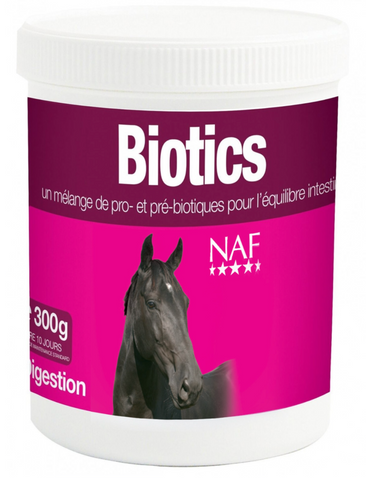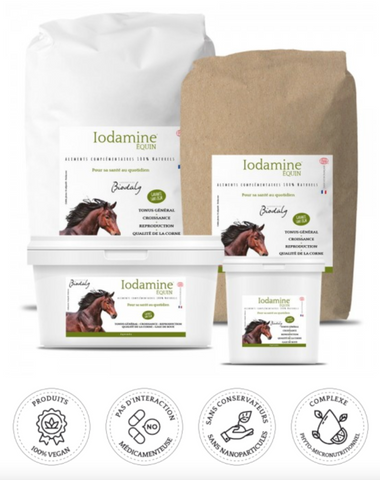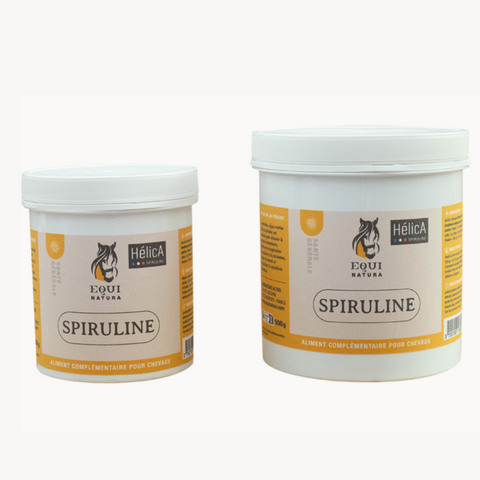Digestion: insulin resistance
The horse is a herbivore which, in the wild, spends an average of 16 hours a day searching for food. It eats small quantities, but very often and ingests all kinds of fiber, the digestion process is characterized by a long fermentation phase. Its digestive system is designed to continuously digest foods with a high cellulose content thanks to the caecum and large intestine which are very developed.
Practically, the intestines release small amounts of sugar into the blood throughout the day.
The hormone insulin, secreted by the pancreas, is responsible for transporting sugars (glucose) into cells (particularly muscles and the liver) to be transformed into energy and fat. To enable this transport, cells have membrane receptors.
This mechanism allows stabilization of blood sugar (the concentration of glucose in the blood), provided, among other things, that the intestinal flora is balanced.
Industrial food and that of overly “cultivated” meadows provide quick sugars in a very short time. Hence a risk of imbalance in the intestinal flora and, several times during the day, a rapid passage of too large a quantity of glucose into the blood.
The pancreas responds by secreting the amount of insulin necessary to transport these sugars into the cells and the concentration of glucose in the blood drops rapidly.
Rather than constant blood sugar levels, sugar and insulin levels experience significant fluctuations.
In the long term, insulin loses its effectiveness because its receptors become less and less sensitive and as a result, glucose no longer penetrates as much into the cells and accumulates in the blood.
We could compare this phenomenon to that of addiction to certain medications such as sleeping pills.
This accumulation stimulates hypersecretion of insulin; more and more are needed to obtain the same effect. In this phase we speak of insulin resistance (IR).
After a certain time the pancreas becomes exhausted and the horse finds itself in a situation of “type 2 diabetes”, it then presents chronic hyperglycemia.
Fortunately, in horses this condition is reversible, however, there is a risk of remaining sensitive to IR.
The biggest supplier of sugars is grass.
Sugars are the building blocks of plant growth.
During the day, grasses produce sugars (glucose, fructose, sucrose) using CO2, water and energy from the sun via photosynthesis.
Then, and especially during the night, the sugars will be transformed into fiber and energy; It’s plant growth.
During the day there is production and processing of sugars, during the night there is no production, but the processing continues. In this case, early in the morning, the grass contains almost no sugars.
This may change from one day to the next.
During an overcast day, there is less photosynthesis and therefore fewer sugars than during a sunny day.
The transformation of sugars can be slowed down by several circumstances:
*lack of water: the plant accumulates sugars while waiting for rain;
*lack of nutrients in the soil, which prevents grass from growing, sugars remain in the plant;
*too low a temperature also prevents the grass from growing and as a result, the sugars produced during the day will be stored.
This especially happens in spring and autumn when the nights are cool (below 5°).
Contrary to what we often think: mowing the grass before putting horses on it is not very useful: the growth of the grass will be stimulated and thus the little pieces of grass will be filled with sugars.
So how can we manage outings to the meadow for horses/ponies susceptible to IR or laminitis or even for horses affected by Cushing's disease?
Below follows some general advice, which mainly concerns the weather. Of course, other factors are important: you also have to think about the quality of the soil, the grass, where you live, etc.
Avoid grazing:
*late afternoon or early evening on a sunny day;
*a whole sunny day with temperatures below 15°;
*all day after a night with temperatures below 5°;
*when the grass has lacked water or nutrients;
*when the grass is very short;
You can let it graze without any worries:
*early in the morning when during the night the temperature has remained above 5°;
*during an overcast day with temperatures below 15°;
*when the grass has enough water and nutrients.
Disorders associated with IR:
*sensitivity/predisposition to laminitis: too high a sugar level in the blood (hyperglycemia) prematurely damages the blood vessels in the lamellae of the hoof (compare to the vascular problems of diabetics);
*fat accumulation in the mane, shoulders and at the base of the tail: the fat metabolism of cells, which have become less sensitive to insulin, is modified and instead of the muscles and liver, fat is stored at these IR-specific locations;
*skin problems, including: summer dermatitis;
*the horse drinks and urinates a lot;
*overweight and sometimes in an advanced phase, thinness;
*prostration and muscle fatigue due to a reduced ability to use glucose from cells; the horse then shows an aversion towards work. We often think: “my horse is tired, stiff… we need to increase his energy feed ration”, which only aggravates the situation;
*horses that are subject to a lot of stress: they produce more cortisol than normal; Cortisol slows down the absorption of glucose by cells and increases circulating glucose levels. (See also the Stress, illnesses and its consequences file).
Additionally, a stressed horse uses a lot of magnesium, and a magnesium deficiency makes the cells' receptors less sensitive to insulin.
Your veterinarian can confirm if your horse/pony is prone to IR through blood tests.
Recommended food for IR horses:
It is necessary to avoid peaks in blood sugar, therefore limit the intake of carbohydrates: no apples, no cereals which provide sugars too quickly.
If you absolutely want to give industrial food, then look for food low in sugar and starch. Give small quantities always accompanied by fiber and supplement with Equine Iodamine .
Feed good quality fodder, which provides plenty of fiber and therefore slow sugars.
Be careful with hay though: try to find out under what circumstances the hay was harvested: hot days, followed by cool nights, lead to the accumulation of sugar in the hay. If in doubt, then soak the hay for an hour; the water-soluble fructan will disappear.
For working IR horses: depending on the discipline and depending on the type of work required, increase the intake of high quality lipids; the horse will use it as a source of energy.
To manage the IR problem you need less energy (starch) but the protein, vitamin and mineral needs do not change.
There are foods adapted to these problems (IR, laminitis) but when your horse works a lot, monitor the level of vitamin E + selenium and magnesium.
In all cases: make the horse move, according to its possibilities, and increase the working time gradually, after assessing the situation with your veterinarian.
If your pet is obese, do not make him lose weight too quickly.
Above all, give him fodder, Slimline , and establish a work program adapted to its condition.
From time to time take courses of Equi'drink Immunotonic or Equi'drink Drainage for the liver and kidneys, combined with courses of Biotics for the intestines.






